Roti Canai, a beloved Malaysian flatbread, has made its mark on the global culinary stage. Its tender layers and rich flavors have captivated the taste buds of many. In this article, we embark on a culinary journey, exploring the origins, ingredients, and step-by-step instructions to create the perfect Roti Canai.
[ez-toc]
History
The history of Roti Canai is as rich and diverse as the layers of this beloved Malaysian flatbread. Originating from the vibrant streets of Malaysia, Roti Canai’s journey through time is a testament to the blending of cultures and the evolution of culinary traditions.
Indian and Malay Fusion: The Birth of Roti Canai
The story begins in the bustling “mamak” stalls of Malaysia, where Indian and Malay influences converged to give birth to Roti Canai. The term “mamak” refers to Indian-Muslim eateries that have played a pivotal role in shaping the country’s food landscape. In the early 20th century, Indian immigrants brought with them the art of making paratha, a layered flatbread, to Malaysia.
In a culinary crossroads, local Malays embraced this Indian technique and infused it with their own culinary flair. The result was Roti Canai – a delectable marriage of the Indian paratha and Malay culinary sensibilities. The word “Canai” is said to be a derivative of “Chenai,” the Tamil word for griddle, highlighting the cooking method crucial to its preparation.
Rise to Culinary Prominence
Roti Canai quickly rose to culinary prominence, becoming a staple not only in Indian-Muslim eateries but also in various dining establishments across Malaysia. Its popularity soared as locals and visitors alike were captivated by its unique texture – flaky on the outside, soft on the inside – and the ability to pair it with a variety of flavorful curries.
Culinary Adaptations and Variations
As Roti Canai became ingrained in Malaysian culture, it underwent numerous adaptations and variations. The art of stretching the dough, a technique passed down through generations, became a symbol of expertise among Roti Canai makers. Over time, creative minds experimented with sweet variations, introducing toppings like condensed milk and chocolate, adding a new dimension to this culinary gem.
Global Spread and Recognition
Beyond Malaysia, Roti Canai transcended borders and gained recognition on the global culinary stage. Malaysian communities around the world embraced and adapted this dish, introducing it to new audiences who quickly fell in love with its unique flavors and textures. Today, Roti Canai is not just a local delicacy but a global phenomenon, celebrated for its cultural significance and culinary excellence.
Cultural Significance: Beyond the Plate
More than just a dish, Roti Canai holds cultural significance in Malaysia. It has become a communal experience, bringing people together in the joy of sharing a meal. The “tear and share” aspect of Roti Canai symbolizes not only the act of breaking bread but also the unity and diversity that define Malaysia’s cultural tapestry.
Preserving Tradition in Modern Times
In an era of rapid globalization, the tradition of making Roti Canai has persisted. Families, street vendors, and chefs continue to pass down the art of creating this iconic flatbread, ensuring that its legacy endures for generations to come.
As we savor the layers of Roti Canai today, we’re not just indulging in a delicious flatbread; we’re tasting the history and cultural fusion that has shaped Malaysia’s culinary identity.
Time
| Step | Time |
|---|---|
| Preparing the Dough | 15 minutes |
| Stretching the Dough | 10 minutes |
| Cooking on the Griddle | 5 minutes per piece |
| The Perfect Pairings | Variable based on choice |
| Sweet Varieties | 20 minutes (if applicable) |
| Savory Twists | 15 minutes (if applicable) |
| Tips for a Flawless Roti Canai | 5 minutes |
| Making Roti Canai Ahead of Time | 30 minutes (if applicable) |
Ingredients
| Ingredients | Quantity for 2 Persons |
|---|---|
| All-purpose flour | 2 cups |
| Water | 1 cup (approximately) |
| Condensed milk | 2 tablespoons |
| Ghee or clarified butter | 3 tablespoons |
| Sugar | 1 teaspoon |
| Salt | 1/2 teaspoon |
| Chicken curry | 1 cup |
| Dhal curry | 1 cup |
| Cooking oil | For stretching the dough |
Directions
Preparing the Dough
- Combine Dry Ingredients:
- In a large mixing bowl, combine 2 cups of all-purpose flour, 1 teaspoon of sugar, and 1/2 teaspoon of salt. Mix well to ensure even distribution.
- Add Water Gradually:
- Gradually add water, approximately 1 cup, to the dry ingredients. Stir continuously to form a dough. Adjust the water if needed to achieve a soft and elastic consistency.
- Knead the Dough:
- On a lightly floured surface, knead the dough for about 10 minutes or until it becomes smooth and elastic. Cover it with a damp cloth and let it rest for 15 minutes.
Stretching the Dough
- Prepare the Griddle:
- Heat a griddle or flat pan over medium heat. Brush it lightly with cooking oil.
- Divide and Shape:
- Divide the rested dough into two portions. Take one portion and shape it into a ball. Using your hands and some oil, gently stretch and flatten the dough on the oiled surface until it is almost translucent.
- Stretching Technique:
- Master the art of stretching by lifting and rotating the dough, allowing it to thin out without tearing. This step is crucial for achieving the signature layers of Roti Canai.
Cooking on the Griddle
- Cooking Process:
- Place the stretched dough onto the preheated griddle. Cook for about 2-3 minutes on each side, or until golden brown and slightly crispy.
- Brush with Ghee:
- While cooking, brush each side of the Roti Canai with ghee or clarified butter. This adds richness and enhances the flavor.
The Perfect Pairings
- Choose Your Curry:
- Serve the Roti Canai hot with a side of chicken curry and dhal curry. Adjust the quantity of curry based on personal preference.
Equipment Required
Nutrition Information
| Nutrient | Per Serving (2 Roti Canai with Chicken and Dhal Curry) |
|---|---|
| Serving Size | 1 serving |
| Calories | 450 calories |
| Total Fat | 20g |
| – Saturated Fat | 10g |
| Cholesterol | 40mg |
| Sodium | 750mg |
| Total Carbohydrates | 60g |
| – Dietary Fiber | 3g |
| – Sugars | 5g |
| Protein | 10g |
| Vitamin D | 0mcg |
| Calcium | 30mg |
| Iron | 3mg |
| Potassium | 200mg |
Tips
- Perfecting the Dough Consistency:
- Gradually add water while mixing to control the dough’s consistency. Adjust as needed to achieve a soft and elastic texture.
- Resting Time Matters:
- Allow the dough to rest for at least 15 minutes. This ensures it becomes more pliable, making it easier to stretch without tearing.
- Use Cooking Oil for Stretching:
- Coat your hands and the surface with a bit of cooking oil while stretching the dough. This prevents sticking and helps achieve the desired thinness.
- Master the Stretching Technique:
- Practice the stretching technique by lifting and rotating the dough. It may take a few tries, but mastering this step is crucial for achieving the characteristic layers of Roti Canai.
- Optimal Griddle Temperature:
- Maintain medium heat on the griddle. Too high a temperature might result in burning, while too low may not give that desired crispiness.
- Brushing with Ghee:
- Brushing each side of the Roti Canai with ghee adds a luxurious touch to the flavor and contributes to its signature texture. Don’t skip this step!
- Pairing Curries:
- Experiment with different curries. Chicken curry and dhal curry are classic choices, but exploring other options adds variety to the meal.
- Creative Toppings:
- Get creative with toppings for sweet or savory variations. Condensed milk, chocolate, cheese, herbs, or minced meat can add exciting flavors.
- Serve Warm and Fresh:
- Roti Canai is best enjoyed fresh off the griddle. Serve it warm for the perfect texture and flavor.
- Garnish for Appeal:
- Garnish with fresh coriander or mint leaves for a visually appealing presentation. This adds a touch of freshness to the dish.
Pros & Cons
| Pros | Cons |
|---|---|
| ✔ Authentic Malaysian Culinary Experience | ❌ Time-Consuming Preparation |
| ✔ Versatile – Sweet and Savory Options | ❌ Requires Practice for Dough Stretching |
| ✔ Communal Dining – Tear and Share | ❌ Moderate Skill Level Required |
| ✔ Cultural Significance and Heritage | ❌ High Calorie Content |
| ✔ Adaptable to Dietary Preferences | ❌ May Require Specialized Ingredients |
Conclusion
In conclusion, embarking on the journey of preparing Roti Canai is more than just creating a meal; it’s an exploration of the rich culinary heritage of Malaysia. From the intriguing origins rooted in Indian and Malay influences to the artful process of stretching the dough, every step contributes to the layers of flavor and texture that define this beloved flatbread.
As you delve into the world of Roti Canai, anticipate the joy of tear-and-share communal dining, savoring each bite of the soft, flaky layers paired with aromatic curries. The recipe offers not only a delicious dining experience but also an opportunity to connect with the cultural significance of this iconic dish.
While the process may require a bit of practice, the satisfaction of mastering the dough-stretching technique and presenting a plate of homemade Roti Canai is unparalleled. The versatility of the recipe allows for creative adaptations, making it suitable for various taste preferences, whether sweet or savory.
So, why not roll up your sleeves, gather the ingredients, and embark on this culinary adventure? Explore the layers of Roti Canai, and let the flavors transport you to the vibrant streets of Malaysia. Whether you’re a seasoned chef or a cooking enthusiast, this recipe promises a delightful and authentic experience. It’s not just a dish; it’s a celebration of flavors, culture, and the joy of sharing good food with loved ones. Get ready to savor the taste of Malaysia in every tear and share moment. Happy cooking!
Facts
- 1. The Dance of Layers: 🕺💃
- Did you know that the stretching process for Roti Canai is often referred to as the “Roti Canai Dance”? Makers skillfully lift, twirl, and stretch the dough, resembling a dance that brings this delightful flatbread to life.
- 2. Roti Canai’s Global Journey: 🌍✈️
- Roti Canai isn’t confined to Malaysia alone. It has traveled the globe, making its mark in various countries. From local street vendors to high-end restaurants, this Malaysian gem has found a home on diverse international menus.
- 3. Mamak Stalls: The Birthplace of Roti Canai: 🇲🇾🍽️
- The iconic Roti Canai originated in the vibrant “mamak” stalls of Malaysia, where Indian and Malay culinary traditions merged. These eateries, known for their communal ambiance, have played a significant role in shaping the country’s food culture.
- 4. Roti Canai Variations: Sweet Symphony and Savory Surprises: 🍫🍌
- Beyond the classic version, Roti Canai boasts a symphony of sweet and savory variations. Imagine indulging in Roti Canai topped with condensed milk and chocolate or savoring the savory delight of cheese and herbs. The possibilities are as diverse as your taste buds.
- 5. The Tear and Share Tradition: 🤝🍽️
- One of the unique aspects of enjoying Roti Canai is the communal act of tearing and sharing. Families and friends gather around, tearing pieces of this flaky delight and sharing the joy of a delicious meal together. It’s not just a dish; it’s a bonding experience.
FAQ’s
Is Roti Canai difficult to make for beginners?
While the stretching technique may require practice, the recipe is beginner-friendly with clear instructions. Start with small batches to build confidence.
Can I use gluten-free flour for Roti Canai?
Adapting Roti Canai to be gluten-free is challenging due to its unique texture. However, some recipes use alternative flours for those with dietary restrictions.
How thin should I stretch the Roti Canai dough?
Aim for a thickness that is almost translucent. Practice will help you find the perfect balance for the signature flaky layers.
Can I freeze Roti Canai dough for later use?
Yes, freezing Roti Canai dough is a convenient way to prepare in advance. Follow our guide for the best results.
What is the best curry to pair with Roti Canai?
While personal preference plays a role, the classic choice is chicken curry or dhal curry. Experiment with different curries to find your favorite.
Can I make Roti Canai ahead of time for a party?
Yes, you can prepare Roti Canai ahead of time. Follow our tips for making it in advance without compromising its quality.
How can I prevent the dough from tearing while stretching?
Using a bit of cooking oil on your hands and the surface helps prevent sticking and tearing. Patience and practice will improve your stretching technique.
Are there healthier alternatives to ghee for brushing the Roti Canai?
Yes, you can use alternatives like olive oil or clarified butter for a healthier option. Experiment with flavors based on your preferences.
Can Roti Canai be enjoyed with sweet toppings?
Absolutely! Explore sweet variations with toppings like condensed milk, chocolate, or even fruit for a delightful dessert or breakfast option.
What makes Roti Canai different from other flatbreads?
The unique combination of Indian and Malay influences, along with the stretching technique, sets Roti Canai apart, creating its distinctive layers and flavor.






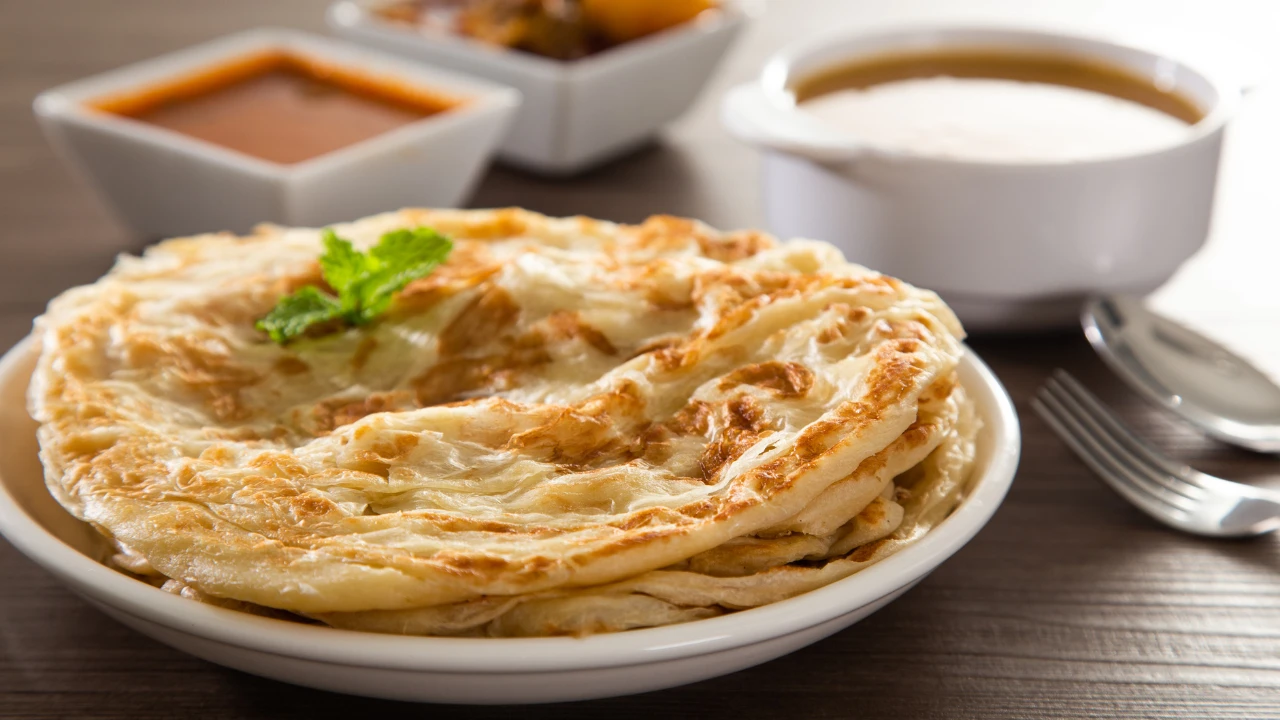

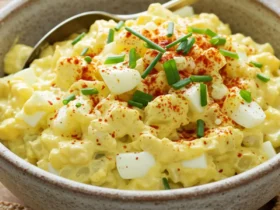
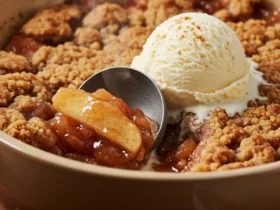
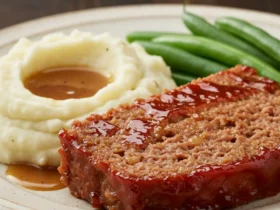
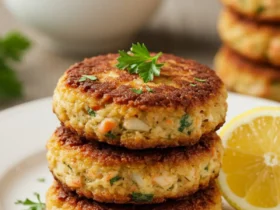
Leave a Review